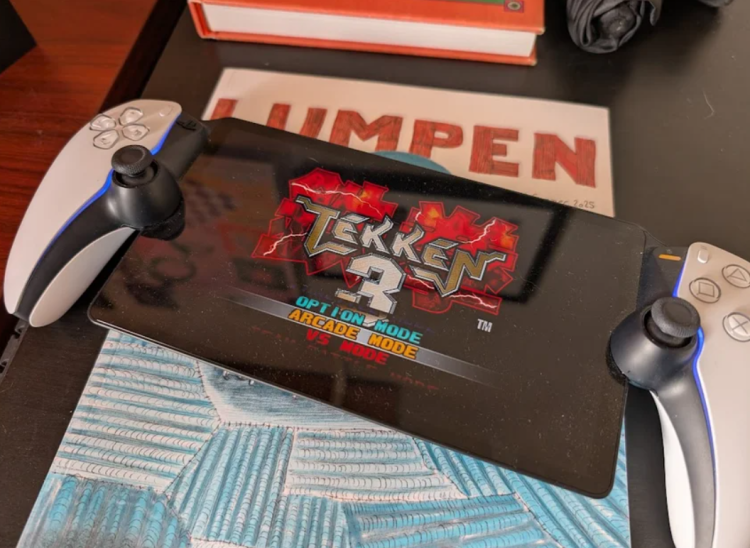Sony Enables PS Portal To Stream PS5 Games Without A Console
Sony has delivered a decisive update to the PS Portal this week, expanding the device beyond its original purpose and reshaping what the handheld represents in the PlayStation ecosystem. With cloud streaming support now enabled for PlayStation Plus Premium users, PS Portal owners can play PS5 titles without owning a PS5 at all. The change marks the most significant shift for the Portal since its debut in late 2023, when Sony framed it strictly as an accessory for remote play rather than a standalone platform.
The update arrives after roughly a year in beta testing and fulfills a promise Sony made in 2024 to untether the Portal from the PS5. It repositions the £200 handheld from a niche companion screen into a functional streaming system capable of accessing high-end console titles through Sony’s cloud infrastructure. Astro Bot, Borderlands 4, Final Fantasy VII Rebirth, Grand Theft Auto V, Resident Evil 4, and Fortnite sit among the marquee games now accessible without local hardware, along with thousands of catalog titles available on PlayStation Plus.
When the Portal launched, its pitch felt specific to shared-screen households and dedicated PlayStation users willing to trade immediacy for mobility. Sony described it as a solution for moments when the main television was occupied, not as a challenger to handheld market leaders or the cloud ambitions of rival platforms. That framing limited expectations, even as the hardware itself proved capable. The 1080p screen and DualSense-derived controls delivered a familiar PlayStation experience, yet the dependence on local streaming and a PS5 sharply narrowed its audience.
This new capability changes that calculus. Turning on cloud streaming involves navigating to the system settings, enabling the feature still labeled as beta, and signing in with a Premium subscription. Once configured, the Portal presents access to a streaming tab at boot, alongside the remote play shortcut for users who still maintain a console. It is not an elegant setup, but it works, and it works universally — even for those who never purchased a PS5 in the first place.
Importantly, streamed titles behave much like locally installed ones. In-game purchases function from within sessions, supporting add-ons and currency transactions. 3D audio is available, and online play works with the expected caveat around latency. Remote play’s dependence on consistent home connectivity always constrained the Portal’s utility, particularly for travelers or those using public networks. Cloud streaming offers a way around that bottleneck, at least when connection quality holds steady.
In practical terms, this update turns the Portal into a mobile PlayStation screen for players willing to accept the limits of streaming. It will not replace dedicated hardware for enthusiasts who demand pristine performance or offline capability. Yet it broadens the Portal’s value and invites a second look from users who dismissed the device at launch. A handheld able to run the breadth of Sony’s library anywhere with a solid connection lands differently in a climate where remote gaming already spans PCs, tablets, and televisions.

The real purpose of game streaming. | Image credit: Eurogamer
Its role remains modest within Sony’s broader hardware lineup. The PS Portal does not signal a pivot to a cloud-first strategy or threaten the relevance of the PS5 itself. It instead fills a defined use case that mirrors real play habits: short sessions, shared spaces, and incidental windows of downtime away from home hardware. In that context, this update lifts the Portal from an experiment to a viable travel companion for PlayStation’s ecosystem.
The move also fits a period in which platform holders stretch software reach across more devices and environments. Microsoft has pushed Xbox access through cloud services and PC integration, while Nintendo continues to blend home and handheld play. Sony’s approach retains a traditional console foundation but quietly acknowledges that modern users expect flexibility. The Portal now delivers that in a more convincing form, even if its impact stays measured.
As cloud infrastructure matures and network reliability improves, portable streaming will likely continue to grow as a practical supplement to dedicated hardware rather than a replacement. Sony’s update positions the Portal squarely in that space. It may not seek to lead, but it now competes with more purpose.
Read also, Sony declares PS5 era most successful PlayStation generation with $136 Billion sales, with CEO Hideaki Nishino confirming the revenue milestone during Tokyo Game Show and placing the current cycle ahead of every prior PlayStation era.

Comments